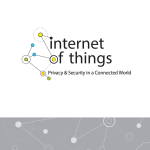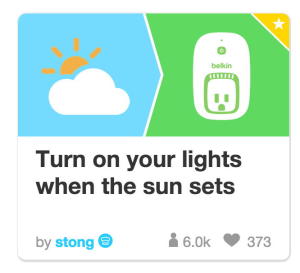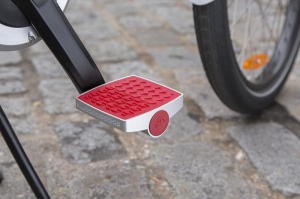For good reason, most discussions of opportunities with the Internet of Things focus on the potential to improve businesses’ operating efficiency or creating new revenue streams.
But what if the IoT could also bring out the hidden 6-yr. old in each of us? What if it could allow us to invent — enchanted objects?
That’s the premise of IoT polymath David Rose’s Enchanted Objects: Design, Human Desire, and the Internet of Things.

Enchanted Objects: Design, Human Desire, and the Internet of Things
Rose is both a stalwart of the MIT Media Lab and a pioneering, serial IoT entrepreneur. Oh, and he’s got an impish grin that shows you he is still as delighted at tinkering with things as he was as a little boy in his grandfather’s workshop:
“Grandfather’s tools were constructed and used with a respect for human capabilities and preferences. They fit human bodies and minds. They were a pleasure to work with and to display. They made us feel powerful, more skilled and capable than we were without them. They hung or nestled quietly, each in its place, and never made us feel stupid or overwhelmed. They were, in a word, enchanting.”
Rose fears that’s not the path we’re heading down with most current techno-products, dismissing them as “cold, black slabs … [resulting in a ] colder, more isolated, less humane world. Perhaps it is more efficient, but we are less happy.” Yea!
By contrast, enchanted objects resonate with our deepest desires:
“The experiences that do enchant us reach into our hearts and souls. They come from the exotic place of ‘once upon a time.’ They help us realize fundamental human desires. The fantastic technologies we have invented over the centuries , the ones of ancient tales and science fiction, enable us to do things that human beings earnestly want to do but cannot do without a little (or a lot) of help from technology. They make it possible to fly, communicate without words, be invisible, live forever, withstand powerful forces, protect ourselves from any harm, see farther and travel faster than the greatest athletes. They are tools that make us incredible, supercapable versions of ourselves. These are the visions and stories of our most beloved authors of fiction and fantasy — Tolkien and C. S. Lewis and J. K. Rowling and the Grimms — and the realities of fantastic characters such as Cinderella, Dick Tracy, James Bond, Superman, and Wonder Woman. The designers creating enchanted objects must, therefore, think of themselves as something more than manipulators of materials and masters of form. They must think beyond pixels, connectivity, miniaturization , and the cloud. Our training may be as engineers and scientists, but we must also see ourselves as wizards and artists, enchanters and storytellers, psychologists and behaviorists.”(my emphasis).
Rose discusses a number of the products he’s designed, such as the Ambient Orb, which can be hacked to unobtrusively (the physiological phenomenon that makes them work is called “pre-attentive processing” in case you’re looking for a term to throw around at a cocktail party…) display all sorts of information, from stock market trends to energy consumption and the Ambient Umbrella, whose handle glows if rain is predicted (that one hasn’t been a big success, which I predicted — it’s as easy to lose an expensive, “smart” umbrella as a $10 one. I prefer the IFTTT recipe that has your HUE lights blink blue if rain is predicted, reminding you to take your utterly conventional, cheap umbrella…), as well as one of my favorites, the Vitality Glow Cap, which can reduce the billions in wasted medical spending attributable to people not taking their prescriptions.

Skype Cabinet
And then there’s one that every child or grandparent will love, the Skype Cabinet, a square that sits in your living room, and, when the door is opened, shazaam, there is your grandchild or grandparent, instantly connected with you via Skype. Enchantment indeed!
However, the real meat of the book is his methodology for those of us to whom enchantment doesn’t come as naturally. First, Rose lists seven basic human drives that designers should try to satisfy: omniscience, telepathy (human-to-human communication), safekeeping, immortality, teleportation (that’s high on my personal list after my recent up-close-and-personal encounters with rogue deer.), and expression.
Then Rose explains how technology, especially sensors, will allow meeting these desires through products that sense their surroundings and can interact with us. In terms of my IoT “Essential Truths,” I’d classify enchanted objects as exemplifying “What Can You Do Now That You Couldn’t Do Before,” because we really couldn’t interact with products in the past. Other examples in this category that I’ve cited before range from the WeMo switches that helped me make peace with my wife and the life-saving Tell-Spec that lets you find food allergies.
Other thought-provoking sections of the book include “Seven Abilities of Enchantment, “Five Steps on the Ladder of Enchantment,” and “Six Future Fantasies,” the latter of which is must reading for product designers and would-be entrepreneurs who want to come up with fundamentally new products that will exploit the IoT’s full potential for transformation.
The other day I finally met with Mahira Kalim, the SAP IoT marketing director who whipped my thinking into shape for the “Managing the Internet of Things Revolution” i-guide. She asked me for examples of the kind of radical transformation through the IoT that are already in existence. I suspect that some of Rose’s inventions fall into that category, but, more important, Enchanted Objects provides the roadmap and checklist for those who want to create the next ones! Get it, devour it, and profit from it!












